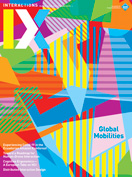Authors:
Andrew Kun, David Shamma
The Covid-19 pandemic made physical conferences impossible, thrusting us all into the world of organizing and attending virtual conferences. Almost overnight, SIGCHI volunteers found themselves asking: How can we continue to build inclusive, supportive, and productive communities of researchers and practitioners with fully virtual conferences? These are difficult questions, and important for us to address as a community. We discussed them at multiple venues, including at SIGCHI panels with 2020 conference leaders [1]. We learned that online conferences present three prominent roadblocks:
- Organizing online events needs new skills. SIGCHI volunteers are widely experienced in organizing physical events. But online events require us all to learn new skills and practices, such as how to create engaging video presentations, how to use online presentation and collaboration tools, and how to assure accessibility and equity in the use of these tools.
- Engaging attendees is challenging. Gone are the opening receptions and coffee breaks, where we can bump into old friends and meet new colleagues. Now we have Zoom fatigue, often unwieldy online platforms, and diversions at home to navigate.
- It's always the middle of the night somewhere. If the event starts at 9 A.M. in Boston, it is probably convenient for an attendee in Berlin (3 P.M.), but too early for an attendee in Seattle (6 A.M.), and too late for attendees in Tokyo (11 P.M.) and Sydney (1 A.M.).
Through our discussions, we also learned how conference organizers navigated these challenges, in the hope that these insights can serve us in 2021:
- Adapt the organization. New tasks may mean creating new roles on organizing committees. For example, we need video chairs who can take responsibility for visual content, interfacing with authors and the SIGCHI video team to process both synchronously and asynchronously generated content. We also need to bear in mind the locations of student volunteers while planning their duties, to make life easier for them and for our global audience.
- Adapt the program. In general, short talks have worked better than longer ones. It has also been helpful to create detailed session plans and rehearsals for session chairs and presenters (as MobileHCI did). Conference attendees have enjoyed engaging in less conventional ways, such as over Discord or online Karaoke (CHI PLAY), or through a virtual bike tour of snowy Minneapolis (CSCW).
- Adapt to time zones. Our conferences also experimented with approaches such as repeating sessions (MobileHCI), sharing videos asynchronously (DIS), or making sure that the burden of having to get up very early or stay up very late was distributed equally across the globe (CHI PLAY).
A key insight we gained from observing the roadblocks and successes: Our organizers and attendees are now much more adept at infusing helpfulness, forgiveness, and empathy into the SIGCHI conference experience. As we leave behind the devastation and pain inflicted by Covid-19, this is one outcome we must preserve.
How can we continue to build inclusive, supportive, and productive communities of researchers and practitioners with fully virtual conferences?
Moving forward, we know that we will eventually return to physical events, even if it takes a while. Even as we do so, we must ensure that the inclusivity offered by virtual participation is not lost from SIGCHI conference efforts, given how these events expand the global reach of our conferences. Attending a virtual conference costs less, requires less investment of time, and incurs a smaller carbon footprint than traveling to a physical conference; we can improve global mobility with fewer resources. We see some signs of this already happening: the SIGCHI YouTube channel had a total of about 650K views in 2019, compared with over a million views in 2020. This new traffic is increasingly global—it is especially exciting to see examples like Brazil, where views have reached 14K, double those of 2020.
This is our quick take on the virtual conference experience at SIGCHI. As we continue to battle the pandemic and, hopefully, slowly emerge from it, what are the things you would like to keep regarding our online events? And what would you definitely like to change? Write and tell us what you think!
1. Recordings available on https://www.youtube.com/user/acmsigchi
Andrew L. Kun is a professor at the University of New Hampshire. He explores how human-computer interaction technologies can support work and well-being in the car and at home. He serves as the ACM SIGCHI interim vice president for conferences. [email protected]
Neha Kumar is an assistant professor at the Georgia Institute of Technology, where she conducts research at the intersection of human-centered computing and global development. She serves as the ACM SIGCHI vice president at large and cares about global equity and inclusivity in SIGCHI. [email protected]
David A. Shamma is an industry scientist, research director, and distinguished member of the ACM. His core research focuses on the Intersections of AI, HCI, and systems. He has held positions at FX Palo Alto Laboratory, Centrum Wiskunde & Informatica (CWI), Yahoo Labs, Flickr, and NASA's Center for Mars Exploration. From 2018 through 2020, he served as ACM SIGCHI vice president for operations. [email protected]
Copyright held by authors
The Digital Library is published by the Association for Computing Machinery. Copyright © 2021 ACM, Inc.









Post Comment
No Comments Found